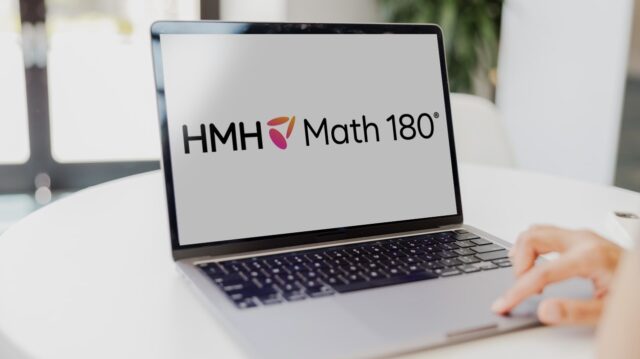
My high school physics teacher, M. Aubé, possessed a certain kind of magic. It wasn't about fancy labs or flashy tech—it was about his contagious curiosity and belief in each of us. In his classroom, science wasn't just a subject; it was a way of looking at the world. Most importantly, he made us feel like we mattered. When I think about what a meaningful classroom looks like, his example constantly reminds me that even within the rigors of academics, relationships must always be at the heart of it all.
At Classcraft, and now at HMH, we’ve had the opportunity to work with thousands of teachers. Overwhelmingly, teachers enter the profession with a similar, heartfelt goal—to guide, support, and spark curiosity in their students. In fact, 75% of teachers state that they joined the profession to make a difference. That dream fuels teachers through late nights of lesson planning, stacks of papers to grade, and countless unpredictable moments. Yet, the day-to-day realities of being a teacher can be incredibly taxing— a similar proportion of teachers say they are overworked. Finding time to build the type of meaningful connections that motivate students can often feel like a luxury amidst the logistical hurdles and relentless demands.
This is where I believe technology can step in as a powerful ally. Not just with another flashy tool, but with something fundamentally different–integrated solutions that free teachers to do what they do best. We want to offer technology that makes the heart of teaching easier and opens space for educators to rediscover the joy that inspires both themselves and their students.
The Building Blocks of Motivated Classrooms
It's trite, but it’s true—teaching is both a science and an art. The most efficacious instructional practices are well researched and well documented (see John Hattie’s research for a great breakdown), and we know that, for example, direct instruction, feedback, and several various routines, such as classroom discussion, are highly effective. However, you can take two teachers going through the same motions and have students engage and respond in very different ways, ranging from very engaged to completely disengaged. The difference? Students know when their teacher cares about them and has designed the classroom to empower them to reach their potential.
Reaching one’s potential is at the core of intrinsic motivation—i.e. the desire to want to partake in activity for its own sake. Educational researchers have spent decades trying to unravel what truly motivates learners and it’s clear that extrinsic rewards and punishments, while effective in the short-term, wear out over time. The prevalent motivational theory, Self-Determination Theory (SDT), has some powerful insights. SDT posits that we all have three basic psychological needs that need to be fulfilled: competence (feeling capable), autonomy (having some sense of choice), and relatedness (feeling connected to others).
Teachers who have the time and support to design learning contexts that fulfill these three needs will see fewer behavioral issues, more engaged students, and ultimately better student outcomes. When students experience this within a classroom, they're far more likely to develop that internal drive and take charge of their own learning.
So, how do we help teachers create these conditions?

Beyond Toolboxes - Technology as an Amplifier
Technology, especially in education, can sometimes feel like a relentless parade of "shiny new things." It's easy to become cynical when a flashy tool promises transformation but ends up adding more frustration than value. As the co-founder of HMH Classcraft, it's always been core to my philosophy that human relationships must be at the forefront of anything we design. Teachers hold the true transformative power; tools are only worthwhile if they make the heart of a teacher's work—developing meaningful contact with students— easier and allow them to deliver genuine impact.
It's no secret that many technology initiatives create more burdens for teachers instead of offering genuine support. They become yet another thing to learn, lesson plans need to be shoehorned to fit a new digital platform, and the result is that technology often pulls energy away from the most important human connections in the classroom. As such, the most powerful use of technology isn't in replacing a teacher's role, but in amplifying it. Teachers deserve technology that streamlines their work, saves them time, and ultimately empowers them to become better relationship builders within their classrooms.
Transforming the Core Classroom
Teachers crave great lesson materials, but if you talk to them honestly, they'll admit those resources aren't the root of what makes a transformative classroom. Teachers don't need just another curriculum package; they need partners who understand the day-to-day rhythms, the logistical hurdles, and the emotional energy it takes to truly reach every student.
We've heard about differentiated instruction for years, but it often feels unattainable when juggling a class of thirty diverse learners. Many differentiation tools focus on tweaking things for individual students, which, let's be real, can feel impossible to do effectively, consistently; especially if you want to be in relationship with students. What if we shift some of our thinking to whole class differentiation? That means tools that help teachers "see" a snapshot of where their entire group is at, what common misconceptions exist, and what kind of adjustments across the entire lesson will have the highest impact.
There's a beautiful artistry to teaching, and so much that can't be scripted. Imagine teachers not just "delivering content," but truly orchestrating learning. They need approaches and tools that help them communicate wins to students (competency), give them room to engage, experiment, and make choices (autonomy), and create a classroom culture in which every student feels like they belong (relatedness). They also need flexible tools that support various lesson structures, formative assessments built seamlessly into instruction, real-time data that makes student thinking visible, and ways to adjust teaching "in the moment" based on genuine responses. It's a complex dance, and technology holds great potential to support this intricate work.
Imagine teachers not just delivering content, but truly orchestrating learning.
It's exciting to be entering this space with HMH. Historically, you think of HMH and you think of high-quality curriculum—something tangible that lives on desks or bookshelves. Now, we're ready to be with teachers not just in preparing lessons, but in those unpredictable, precious moments with their students. That means venturing into an experience-based solution—one that helps orchestrate the core classroom to foster deeper learning for everyone.
Elevating the Work of Educators
Even with the most sophisticated technology, we must always remember that those sparks of inspiration and growth ultimately stem from the deep bonds that form within a classroom. However, the right tools can create space for those connections to take center stage. They can streamline burdensome tasks, illuminate student understanding, and free teachers to tap into their own expertise in even more powerful ways. This isn't about making teachers obsolete; it's about elevating the transformative work they do every single day.
This vision is ambitious, no doubt. Yet, at its heart, it stems from a very simple idea: every teacher deserves a partner in creating dynamic, relationship-rich classrooms where all students thrive.
***
Classcraft saves teachers time and deepens student engagement by transforming the K-8 ELA and Math classroom experience with standards-aligned lessons, real-time insights and GenAI capabilities
See how HMH Classcraft supports engaging, in-person instruction.












